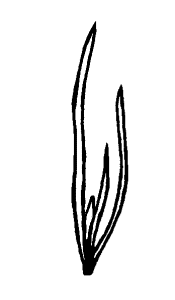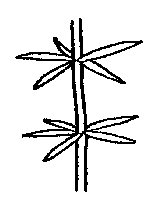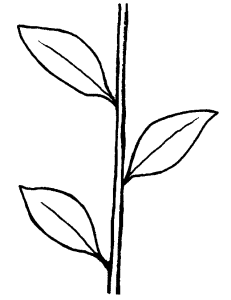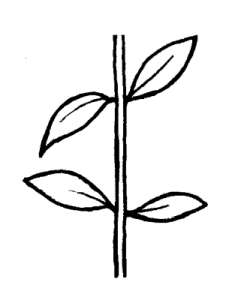Leaf Arrangement
Look at the way that the leaves are arranged on the stem of your
sample. Look in several places to find the most common type of attachment. Don’t
look at the leaves where the stem divides into two, as this will often be
different than the rest of the plant. Click on the selection that seems most
appropriate.
|

|

|

|

|
| All leaves come from the base of the plant at the sediment surface. |
The leaves come from the stem three or more at each location as you move vertically up the stem. |
The leaves come from the stem one at a time as you move vertically up the stem, usually from alternating sides of the stem. |
The leaves come from the stem two at a time as you move vertically up the stem, usually from opposite sides of the stem. |
The key consists of a series of choices based on descriptive statements. To use this key, start at the first page and read the four statements pertaining to
leaf arrangement. Decide which statement best describes the bay grass you have
collected and click on your choice. This will take you to the next pair of
statements. Repeat the procedure until the bay grass in question is identified.
You can then click on the name and additional information concerning the
identification, distribution, ecological significance, similar species, and
reproductive cycle of the bay grass will be provided. You will also be able to
view pictures of the given species and print a fact sheet guide for use in the
field. Note: the number of choices at each step of the key varies depending on
different characteristics that exist among bay grasses in Maryland.
If you reach a point in the selection of descriptive statements where neither of the statements apply, work your way back through the preceding pairs using the “back a level” link at the bottom of each page. You can also get back to the
beginning of the key at any time by using the "Bay Grass Identification" link in the navigation toolbar at the bottom of each page.
For some specimens, measurements and magnification may be necessary to make a
decision between two choices.
After you have made an identification you can return to the first page of the
key to identify additional bay grasses.